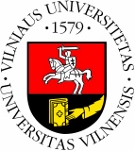Studies and researches
2/2025
Critical Thinking Stance in Teaching Business and Economics. Explorative Qualitative Study in Higher Education
In this paper we present the triangulation of three data sets, observation, focus groups and document analysis in order to reveal the differences between Higher Education Institution (HEI) and Labor Market Organization (LMO) regarding critical thinking (CT) development. The three methods were used chronologically, starting with observation, and continuing to focus groups and document analysis. The results showed that teaching methods were the most "forgotten" item in HEI and were abundant in LMO training settings. Moreover, teaching strategies are different, LMO employing social-constructivist type, different from HEI teachers, which focuses in particular on the transmission of information. The results showed, in this case, that the expectations were confirmed. HEI focuses on the interpretative and analytic aspects of CT, while LMO focuses also on dispositions, enhancing skills like responsibility, awareness, identification, and analysis, interpretation, self-learning. But both HEI and LMO, are addressing CT indirectly, through an implicit teaching approach. The research was carried out as part of the Critical thinking for successful jobs - THINK4JOBS project, which proposes an innovative approach to CT for a better insertion of students in the labour market.
critical thinking, economics, labour market, higher education institution














